by Renie Thomas & Geetu Thakur (Intern)
In the Western Ghats, natural springs are a source of drinking water for many vulnerable rural communities. The springs serve as an essential component for the functioning of our forest cover and dependent ecosystem, yet their conservation is a completely neglected affair. Neither the Maharashtra state policy nor our national policy framework for natural resource management address this issue. There is an urgent need for a paradigm shift from source exploitation to resources management, especially in lieu of climate change. In this post we take a look at springs located in the hilly regions of Akole and Sangamner in Ahmdednagar district. Spring sources that we have surveyed are on a declining trend (both in terms of numbers and discharge), wherein some of the perennial springs have dried up or have been encroached upon, contaminated or destroyed – making it a serious issue for water resource management.
“कडक उन्हाळ्यात आमच्यासाठी हे पिण्याच्या पाण्याचे एकमेव सुरक्षित स्रोत आहे”, which means “This is the only source of safe drinking water for us during lean summer months”, a woman from Kandobachiwadi of Pimpaldhari village responded as she leaned forward to grab water collected in a small pool inside a horizontal rock crevice. She had come to collect 3 handas (vessels) of water, while we were busy surveying in the hot afternoon, trying to understand the springshed (the catchment area of spring source and the associated ecosystem) and its supporting micro-habitat.
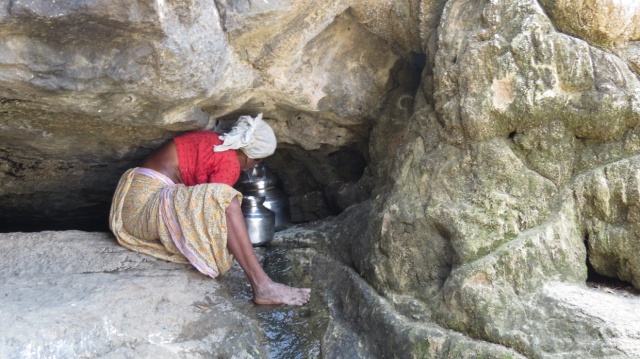
A woman collects water from a spring located at Kandobachiwadi, Pimpaldhari village
The rural landscape of Akole and Sangamner situated close to the western ghats is unique for its majestic mountain ranges, geology and biodiversity. Most of the remote and poorer village communities in these regions rely on natural perenial spring water for their drinking needs.These springs exist as a result of the unique geology of the Deccan traps that consists of multi-layered alternating layers of pervious (vesicular basalt) and impervious (hard massive basalt) strata. The rain water that falls over this landscape infiltrates through root zones of forested areas, percolating through pervious surfaces (top soil and weathered rock) and moving along the gaps between stratas, vertical and horizontal cooling joints to recharge subsurface aquifers.
This groundwater moves slowly down the different units reemerging as springs when it comes across an impervious unit. The Western ghat region is dotted with many such springs sources that are an integral component for the functioning of the stream ecosystem and source of drinking water for many communities.
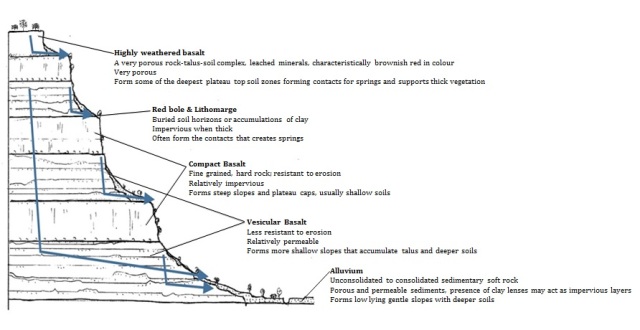
Figure 1: Typical framework of Hydrogeological units with genderalised groundwater flow paths (modified and adapted from Buono et al. 2015)
While assessing the situation, we observed that majority of these basalt units are massive and impervious, and groundwater occurrence and movement in these hard basalts depend primarily on differing hydrological properties of the rock types, degree of weathering and their intrinsic jointing patterns and fractures that provide pathways for water to move to lower aquifers down the valley. The rainfall plays a significant role in the distribution and availability of water for recharge in these regions, however, changes in upstream forest cover significantly impact how water is discharged along such springs and its slow release downslope. With reducing rainfall trends in the region and upstream land cover changes, recharging of the groundwater has dropped considerably and so has the discharge of many springs.
As a part of our comparative spring’s assessment and springshed mapping from Akole and Sangamner villages, a total of 63 springs from 13 villages (8 villages from Akole and 5 from Sangamner) have been marked and recorded. We focussed on mapping perennial springs and excluded springs that have shorter life span post monsoon and hardly get recharged upon rainfall due to lower springshed area.
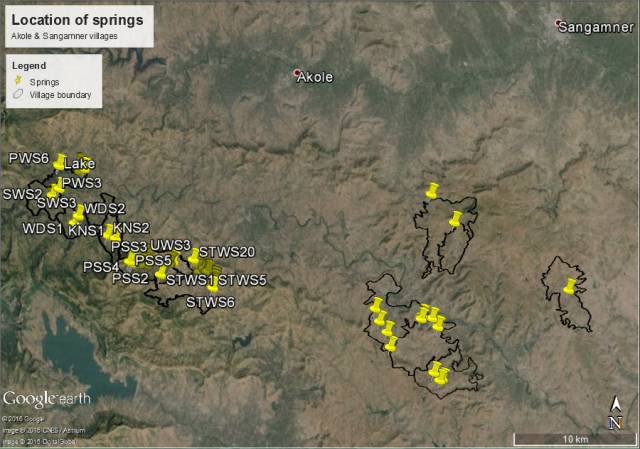
Figure 2: Spring location Map: A total of 50 springs identified in villages of Akole and 13 in villages of Sangamner

A Spring emerges along basaltic lava flow contact at Jawalebaleshwar
We collected data on the rock type that surround the spring, geographic coordinates, elevation, recharge area, discharge measurements and in-situ water quality parameters. Such an exercise of qualitative and quantitative assessment of springs will help in better formulation of conservation springs and management strategies of the upstream areas. Preliminary results show that most of the springs are well within the permissible standards of potable water, but are bacteriologically contaminated. Discharge rates have been impacted due to human and climatic factors, which highlights the need for protection of these sources.
The amount of water that flows out from the springs depends on many factors such as the aquifer rock type, topographic elevation, area of the springshed, and the amount of rainfall. The most obvious threat to these natural flowing springs is their destruction by blasting for creating new open wells whereby disorienting many of the springs, encroachment of invasive species, significant deteroriation of upstream slope canopy and wild fires.
Many of the small streams and rivers, that are like arteries moving down the slope from the catchment area, have their origin in these very springs. One such example is the local river of Krushnavati in Palsunde village of Akole block. The groundwater oozing through these rock openings reenters the subsurface, and resurfaces as springs at lower elevations that feed to base flows of the rivers. Increasing groundwater abstraction downstream has lowered the groundwater table, therein creating a steeper hydralic gradient which affects the discharge of the springs.
Most of the major rivers in Maharashtra have its origins in the western ghats which can be traced back to springs that are venirated by small shrines/temples and have a religious and vedic context in the Hindu culture. According to the local village elders, the number of springs in the past was more, whereas the number of springs that currently feed the base flows along the Krishnavati river channels is just restricted to two.

Krishnavati river, a tributary of the Mandvi river has its origin from springs, and is enshrined by a temple for its protection
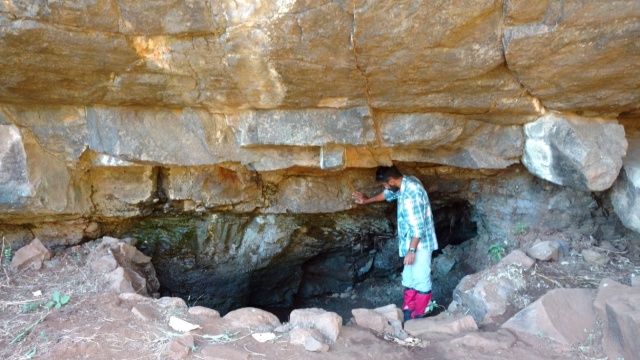
Lower order spring emerging as a base flow along Krishnavati river channel
The springshed also harbours a unique ecosystem that supports a diverse biodiversity and provides a micro-climate for a lot of flora and fauna. The general land surface is cooler around the springs which provides ideal habitats for many burrowing animals like rodents, monitor lizards, porcupines, hares etc.
The widespread and increasing use of groundwater, both upstream and downstream, depletes the amount of groundwater in aquifers, causing reductions in discharge of springs, base flows in streams and availability of water in open wells and lakes. Furthermore, successive droughts in Maharashtra and uninformed extraction has put a significant stress on the current aquifer regimes threatening the health of many springs that emerge in the Western Ghat region and the associated biodiversity.
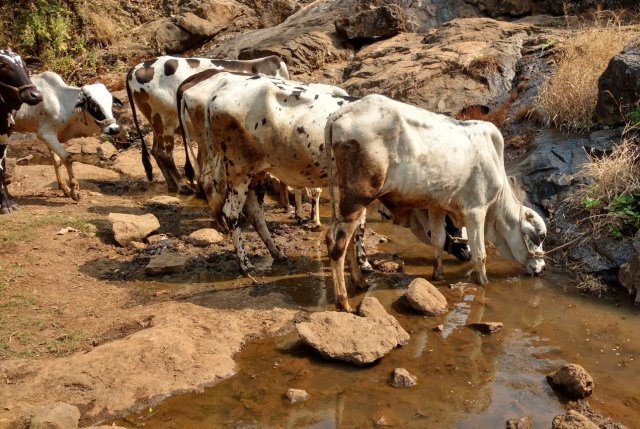
Cattle drink from a spring in Purushwadi Village, Akole
Springs are one of the most fascinating natural outlet of groundwater and a source of water to many vulnerable remote rural communities, livestock and wild animals. These sources of water are completely neglected in terms of conservation, and nowhere in state or national policy framework for natural resource management. The very first fundamental step towards conserving springs is to identify their location and boundaries of their recharge area. Very little work has been done on identification of springs in the Western Ghats [1],[2], [3]. This study is an attempt to understand their significance in the overall water resources planning and its important role in feeding base flows.
Human activities upstream appear to have a significant impact on the volume of water that discharges out from a spring. Both climatic variability and anthropogenic changes in an area can cause water levels in the aquifer system to drop and ultimately decrease the flow from the spring. The need of the hour is to make people (especially the localities/people residing close to the spring and policy makers) better understand the significance of springs and efforts should be focused more on restoration of the springshed, declare these areas as spring sanctuaries for effective management[4], carry out more watershed treatments for recharging these springs and have inclusions in policy to conserve our natural springs.
[1] Buono, J., Thomas, R., Kulkarni, H., Mahamuni, K., Karandikar, M., Ghate, K., Kulkarni, K., Mahesh, N., Ambrale, D., More, A., (2015). Ecohydrologic description of Springs in the North Western Ghats, Maharashtra, Journal of Ecological Society, Vol. 28 , pp. 8 – 24
[2] Thomas, R. (2011). Rapid appraisal study carried out to understand the drinking water problems at Kandobachiwadi and Gurukul village, Pimpaldhari, Sangamner and some recommendations to facilitate the development of spring water, Hydrogeological Report: WOTR/CCA Project/P1 Cluster/Pimpaldhari/Aug/2011
[3] Naik, P. K., Awasthi, A. K., Mohan, P. C. (2002). Springs in a headwater basin in the Deccan Trap country of the Western Ghats, India, Hydrogeology Journal, Vol. 10, pp. 553–565.
[4] Negi, G. C. S., and Joshi, V. (1999): Geohydrology of Springs in a mountain watershed: The need for problem solving research, Current Science, Vol. 71, No. 10, pp. 772- 776

Let it be neglected otherwise, some water bottling company may visit and start extracting the water for commercial purposes, in today’s world of market, few natural resources are remained intact because they are not known or not accessible to market
LikeLike
The threat is not just from bottling companies; in times of drought people are desperate to open up springs (ending up destroying the spring) with a hope of getting more water, and with advent of newer earth moving technology destroying these natural springs will take few minutes.
Before any of these happen, it is better to notify these spring sources and provide protection for these areas. If they are not documented and not acknowledged many of these unknown springs will disappear without us knowing what were the reason.
LikeLike
I Prafulla Udmale student of MSW CSRD Ahmednagar, now I have 2 month vacation, I want do voluntary work in your organisation, for future experience.
LikeLike
Hi Praful, Please write to ganesh.rajapure@wotr.org.in with your CV for internships. Thanks
LikeLike
[…] Natural spring in Western Ghats- Vital but Completely neglected In the Western Ghats, natural springs are a source of drinking water for many vulnerable rural […]
LikeLike